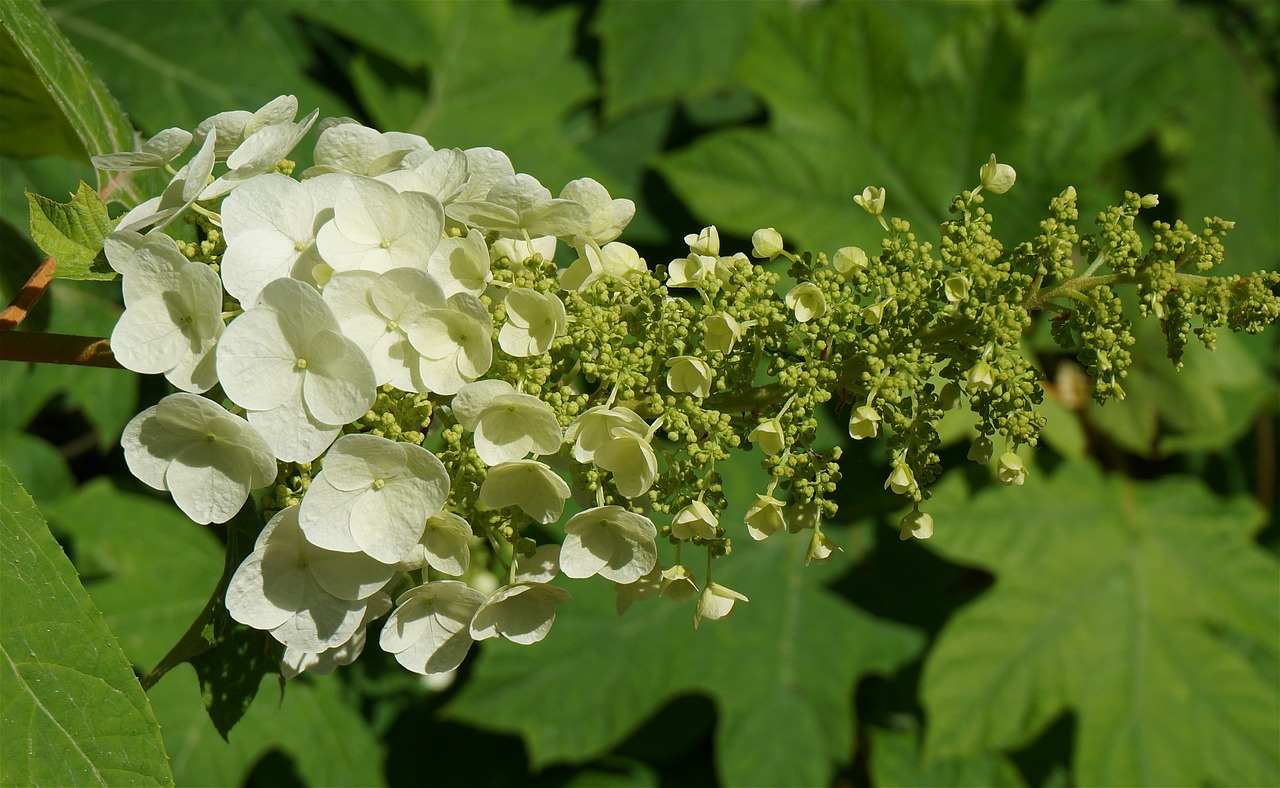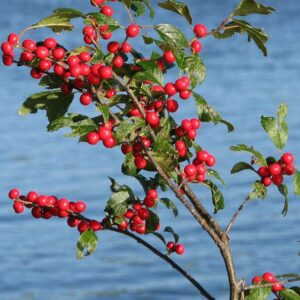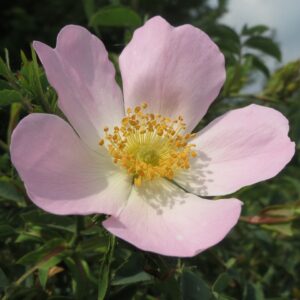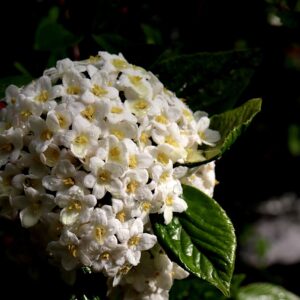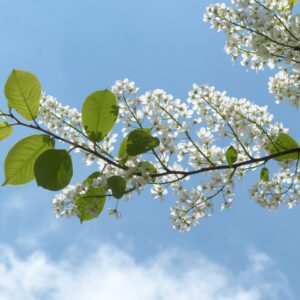Oakleaf hydrangea (Hydrangea quercifolia) is a distinctive and attractive deciduous shrub known for its unique foliage and striking seasonal changes. Oakleaf hydrangea is cherished for its unique foliage, seasonal color changes, and ornamental flowers, making it a standout addition to many gardens.
Appearance:
Size: Oakleaf hydrangea typically grows 4-6 feet (1.2-1.8 meters) tall and wide, but it can sometimes reach up to 8 feet (2.4 meters) in height and spread. It has a rounded, multi-stemmed growth habit.
Leaves: The leaves are the defining feature of this hydrangea. They are large, up to 8 inches (20 cm) long, and have a lobed, oak-like shape, hence the common name. The leaves are deeply veined and have a rough texture. They emerge green and turn vibrant shades of red, purple, or burgundy in the fall, adding seasonal interest.
Flowers: In late spring to early summer, oakleaf hydrangeas produce large, cone-shaped flower clusters, known as panicles. The flowers are initially white or creamy, and they gradually age to pink, then to brown as the season progresses. The blooms are held upright on strong stems, creating a dramatic floral display.
Fruit: After flowering, the plant produces small, dry seed capsules. While the seeds are not typically significant for ornamental purposes, they can add a bit of interest in the fall and winter.
Bark: The bark is another notable feature. It is exfoliating and can have a mottled appearance, peeling off in strips to reveal a smooth, lighter-colored layer underneath. This characteristic provides winter interest and texture.
Habitat: Oakleaf hydrangeas are native to the southeastern United States, where they naturally grow in woodlands, along streams, and in shaded areas. They prefer well-drained soils and can tolerate a range of soil types, including sandy, loamy, or clay soils. They do best in partial shade to full sun conditions.
Uses:
Ornamental: The oakleaf hydrangea is widely used in landscaping for its dramatic foliage, beautiful flowers, and winter interest. It works well as a specimen plant, in shrub borders, or as part of woodland gardens.
Cultural: The plant can be used to add texture and contrast in garden design. Its large leaves and distinctive flower clusters make it a focal point in garden beds and mixed plantings.
Care:
Pruning: Prune oakleaf hydrangeas after flowering, as they bloom on old wood. Pruning in late summer or early fall helps maintain their shape and encourages healthy growth for the following season. Do not prune in spring.
Watering: They require regular watering, especially during dry periods. They generally prefer moist, but well-drained soil.
Fertilizing: A balanced, slow-release fertilizer applied in early spring helps promote vigorous growth and flowering.

